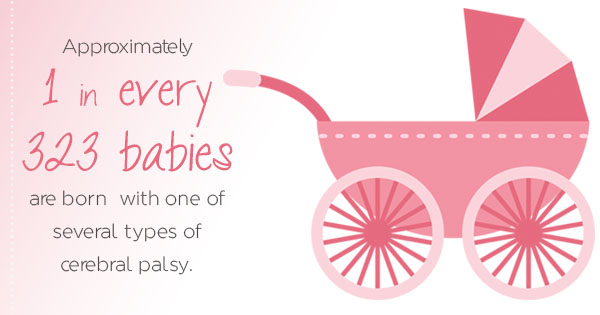Recognizing if Your Child Has Cerebral Palsy and What to Do Next

Congenital cerebral palsy is one of the most common childhood disabilities that impacts growth and development. According to the Center for Disease Control (CDC), approximately one in every 323 babies is born with one of several types of cerebral palsy. The families of children who are given a cerebral palsy diagnosis need support in identifying and getting their children the help they need. Understanding cerebral palsy causes, symptoms, and treatment options is key to helping parents get their children the support they need.
Causes of Cerebral Palsy
Cerebral palsy is caused when a child sustains a brain injury in utero, in the birthing process, or right after birth, while their brain is still developing. Babies who have a birth weight of less than 5-pounds, 7.5-ounces may have higher rates of developmental issues in the brain, causing cerebral palsy. Approximately 20% of babies with cerebral palsy symptoms were subject to cerebral palsy birth trauma.
The source of cerebral palsy varies from one child to the next, but often the cause of cerebral palsy can be identified through the diagnosis process. While knowing what caused your child’s cerebral palsy does not change their diagnosis, it may help the parents and medical team create an effective treatment plan. Also, many parents with children who have congenital birth defects carry a heavy weight of constantly wondering if they could’ve done something different to prevent the disability. Knowing the cause for your child’s cerebral palsy can lift that unnecessary burden. Additionally, in some cases, cerebral palsy is a result of medical malpractice. Identifying negligence on the part of the medical provider can help get your child the resources they need to treat and live with their disorder.
Cerebral Palsy Symptoms
The exact symptoms that a child who has cerebral palsy will display varies from the cause and the extent of their injury. It also varies by what age the child is diagnosed, as cerebral palsy symptoms tend to evolve over the course of a person’s life.
Cerebral palsy symptoms in a baby younger than six months include:
- The baby’s limbs feeling stiff or floppy, but not relaxed or natural.
- The baby may not be able to naturally cuddle when being cradled in a person’s arms; their body may arch or act as if they’re pushing away.
- The baby doesn’t develop neck strength to support their own head when they are picked up.
The cerebral palsy symptoms in a child between the age of six months to one year include:
- Not developing the ability to roll over from their back to stomach or stomach to back on their own.
- Not developing the coordination to put their hands together in a clap.
- Primarily using one hand, while keeping the other balled in a fist.
The cerebral palsy symptoms in a child older than one year include:
- Not developing the ability to crawl.
- Not learning to stand unsupported.
- Not taking at least one step on their own by the age of 15 months.
Many of these symptoms will be identified at regular pediatric appointments, so a diagnoses and treatment plan can be made. However, you spend far more time with your child than your pediatrician does in their short appointments. You may notice these signs and symptoms sooner than your pediatrician would. If you do notice your child might be displaying cerebral palsy symptoms, it is a good idea to make it a point to bring it up with your doctor so that your child can get help quickly.
Cerebral Palsy Treatments
As with the cause and symptoms of cerebral palsy, the treatment plan varies from one case to the next. Many times, doctors use physical therapy, stretches, and exercises to help a child with cerebral palsy develop the muscles that they struggle to use. Sometimes, the child’s cerebral palsy leads to secondary developmental issues. For example, if the child’s cerebral palsy prevents them from using their facial muscles, it might also prevent them being able to eat or communicate easily. In these cases, additional treatment plans will be put in place for the secondary issues caused by the cerebral palsy. In serious cases, a doctor may recommend medication or even surgery if the child’s cerebral palsy causes significant secondary complications.
